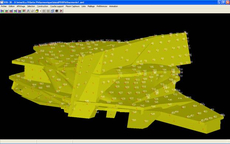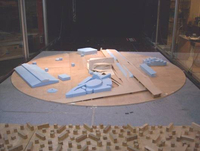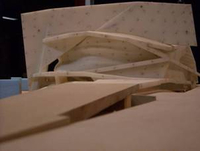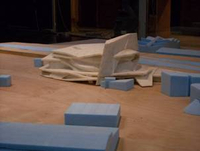Paris philharmonic auditorium: let the music play!

In slightly less than four years, Paris will be able to take pride in its new unique concert area just a few steps from the Cité de la Musique. The Paris Philharmonic association supported by the State and the City of Paris is starting construction of music facilities, in which the largest hall will be able to hold an audience of 2 400 persons. The most famous symphony orchestras will feel at home here, thus reinforcing the cultural vocation of this district in north-eastern of Paris. "We have been asked by the Paris Philharmonic to study the behaviour under wind of this building designed by Jean Nouvel, says Christian Barré, CSTB engineer. We made a 1:175 scale model for this purpose, and carried out different types of tests in our Nantes wind tunnel". The test phase was spread over a period of three weeks during September 2008, after several weeks of preparation. 930 pressure field measurement points were installed after construction of the model of this immense 300-meter long and 100-meter wide structure.
Tests facing the wind: measurement on the march
Tests applied firstly to the wind design of the different parts of the building, and particularly the screen wall with its maximum height of 50 meters, under extreme events such as the storms that struck France in 1999. "We also reconstructed the environment of the future building so as to characterise its impacts on nearby buildings and neighbours, says Christian Barré. Secondly, we studied comfort on the terraces on windy days, pedestrian accesses and the near building environment. Thirdly, we analysed the distribution of smoke plumes output from the smoke removal system on areas accessible to pedestrians". The fourth and final step of the work done by CSTB teams was an aero-acoustic study, largely bibliographic. It would be unthinkable for wind to pass through the interstices of the structure to generate the slightest audible parasite noise inside the concert halls.
On the roof of the music temple
The model of the Paris Philharmonic was placed on a turntable, and wind from all directions was applied to it, and particularly the west wind that is the prevailing wind in the Paris area. Furthermore, the very large number of pressure sensors distributed over the entire surface of the scale model that had been put into the wind tunnel made it possible to calculate loads and forces applied to the different parts of the building. Analyses of measurements made during the tests did not detect any particular design problem. Similarly, no significant impact on the comfort of neighbours and pedestrians was observed; the La Villette district is located in the heart of Paris, it is surrounded by long buildings, and the site is well protected. So much the better! It would have been a pity if visitors to the Philharmonic were unable to access the roof of the future facilities to enjoy a unique view over the capital.
A sintered powder model
CSTB made use of a still unusual technique called "sintered powder" to make the complex structure of the Paris Philharmonic in an optimum manner. An essential condition is to have a 3D digital file of the building. This file is read by a special machine controlling a laser beam moving with an accuracy of a 10th of a millimetre inside a polymerisable powder tank. Under the action of the laser beam, the powder melts and then sets; the 1:175 model is thus made piece by piece. All that is necessary then is to assemble the pieces to obtain a complete assembly with geometry conforming perfectly with the original.






